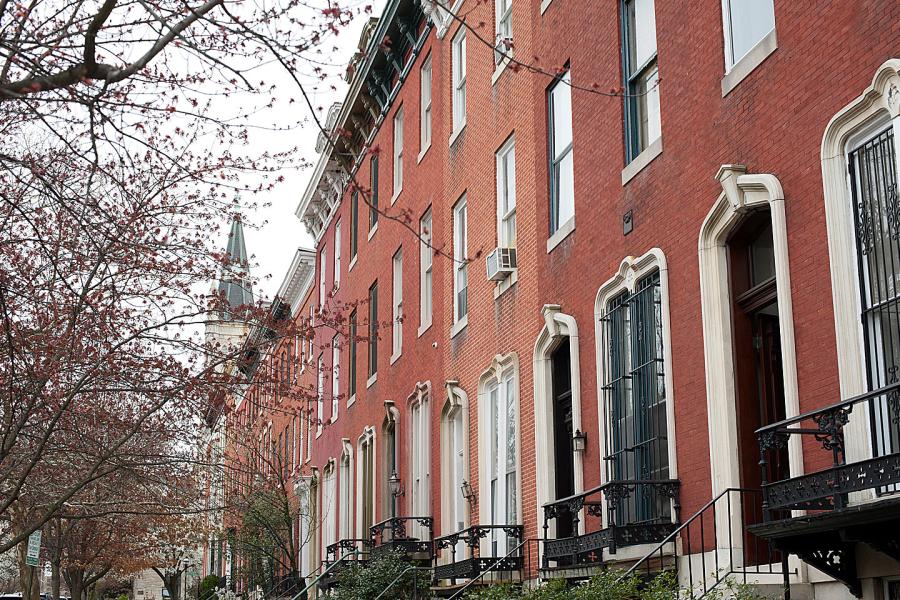When Johns Hopkins researchers began developing the Baltimore Area Survey—a new annual appraisal of Baltimore City and County residents—they wanted to ask questions on hot-button issues that could inform local and state policy while also gauging the emotional state of the area's residents. For the transportation section of the survey, for instance, that meant asking questions like: Do you feel left out? Do you feel down because you don't have transportation to get to places for social engagement? Have you ever been let down by transportation?
"It's really important to understand whether people can get to the doctor or get to work, but it's also important to know whether you feel like you're left out because you can't get to places to meet folks," explains Michael Bader, faculty director of the Johns Hopkins 21st Century Cities Initiative, which released the survey in late 2023. According to their findings, 1 in 10 Baltimore area residents admitted that they "often" feel down because of transportation issues, while a whopping one-third of residents reported at least one transportation issue. The data also highlighted racial inequality in public transportation: Twice as many Baltimore area residents of color experienced transportation-related issues—like missing an appointment—than white residents in the same areas.
With the Baltimore Area Survey, Bader—an associate professor of sociology who studies the evolution of cities and neighborhoods since the civil rights era—wanted to document what daily life looks like for Baltimore area residents and how experiences and perceptions are impacted by race. Last summer, his team mailed the survey to 6,000 Baltimore City residents and 4,000 Baltimore County residents, along with a crisp $2 bill as an incentive. A total of 1,352 households sent back their responses. A collaboration between Hopkins researchers, community members, and students, the survey zeros in on four broad themes: neighborhoods, connectivity, health, and finance/entrepreneurship.
"One of the things that I think we did was document the ways in which the daily disparities and inequalities exist among white and Black Baltimoreans," he says. "We know it exists, but to be able to put data behind what those disparities are and across different dimensions is valuable, and I think it's something we can contribute as a university to the city."
While some inequities were expected, there were several that surprised the research team. When it came to food insecurity, for example, Bader and his team ran the numbers three or four times before believing that the city's rates are 2 to 3 times higher than the national average. And on the topic of policing, 3 out of 4 Black Baltimoreans feared being arrested or questioned by the police, while only 1 in 4 white residents said they had the same fears.
In the education section, the biggest takeaway for the team was that county residents thought that public schools in the county were better than those in the city.
The survey's results are already being used by local agencies and organizations to support programming and policy changes. Central Baltimore Partnership, for example, is using the data to support its Greenmount Life, Opportunity, and Wellness Initiative, which is focused on examining the social determinants of health along the Greenmount Avenue corridor. "The organization is using data from the Baltimore Area Survey to get additional insight into the needs of the neighborhoods where they work and to identify any disparities such as food or transit insecurity," explains Mac McComas, senior program manager for the 21st Century Cities Initiative.
While Bader hopes the data from this project will inform future policy, he also wants it to serve as a foundation for graduate students and other researchers to build their studies upon.
Raghav Agrawal, a sophomore economics major, was one of two undergraduate students who worked on the study. At first Agrawal, who often uses public transportation, thought questions about being let down by transportation were strange for this type of survey, but after deeper analysis he was able to see how important it is to address these types of questions.
"This project has helped me to view everything through an equity lens," he says. "Now I ask, Is it equitable distribution? … It gives me hope for how it can help the city."
Also see
The questions won't be the same from year to year, but Bader hopes to work closely with a committee of local nonprofits, faith leaders, government officials, and philanthropists to identify important topics to examine. The goal is to ensure that policymakers have the latest and most informed data when making decisions for their constituents. The questions for the 2024 survey are already in the works, with transportation issues remaining at the forefront. This time, the questions will go beyond transportation insecurity and consider the upcoming plans for the Red Line—a major initiative to enhance east-west transit in the city—and Complete Streets—a plan to better consider pedestrians, bicyclists, and transit users in roadway design. The questions will also explore how people are impacted by violence and possible solutions to the problem.
Bader says he wishes the survey would've begun years earlier.
"If we had a survey in 2019 and out every year following, we would've been able to understand some of the impacts of the pandemic as they were happening rather than waiting three years to get the information," he says. "We never know when these things are going to come up, and that's why this project adds value to the Baltimore community."
Posted in Community








